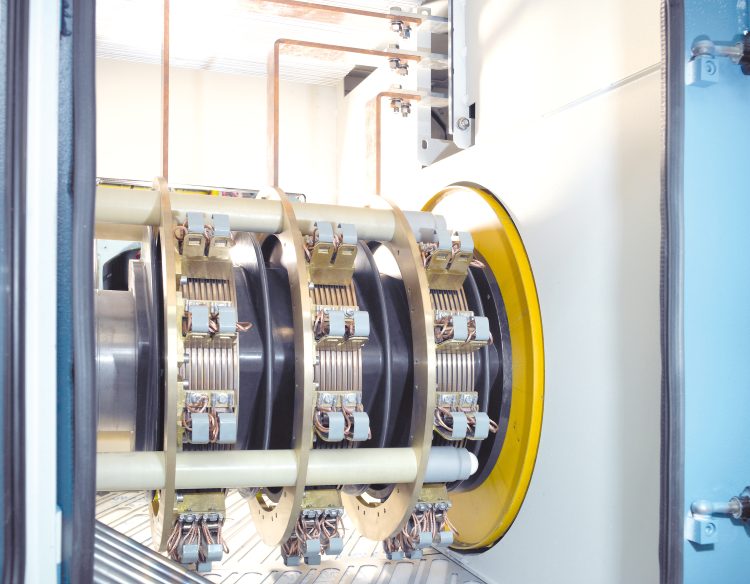Our in-depth article, offers an all-inclusive exploration of the cornerstone of electric motors: the contacts. From defining what electric motor contacts are to elaborating on their essential role in various applications, the guide takes readers from the basics to an understanding of their intricate designs and conductive properties.
We also provide practical guidance on installation and troubleshooting considerations, as well as essential advice on maintenance for optimal longevity and reliability. Additionally, we dig into common issues with electric motor contacts, offering practical solutions and preventive measures to keep your motor functioning at its best.
The trends and innovations shaping the future of electric motor contacts are highlighted, painting a picture of what to expect in this evolving field. The guide also emphasizes the importance of electric motor contacts in maximising motor efficiency and discusses safety practices needed during handling and maintenance.
Finally, regulatory and compliance standards for electric motor contacts are explored, underscoring the crucial role of these industry norms on safety and performance. The final chapter provides a buyer’s guide to facilitate the selection of the best contacts for diverse applications or industries.
What is the Role of Electric Motor Contacts
Electric motor contacts are foundational components in the vast majority of electric motors that power everything from household appliances to industrial machinery. At their core, electric motor contacts are electrical switches that control the flow of electricity into the motor. These contacts can vary widely in design and materials, but they all serve the essential function of managing the electrical connections that make motor operation possible.
The importance of electric motor contacts cannot be overstated. They are the gatekeepers of electric power, enabling the precise control of motor operation. This control affects not only the efficiency and performance of the motor but also its lifespan and safety. For example, in household appliances like washing machines and mixers, reliable electric motor contacts ensure that the devices can operate smoothly at varying speeds and under different loads without overheating or failing. In industrial settings, the stakes are even higher—electric motor contacts must reliably handle high voltages and currents, often in harsh environments, to keep critical machinery running.
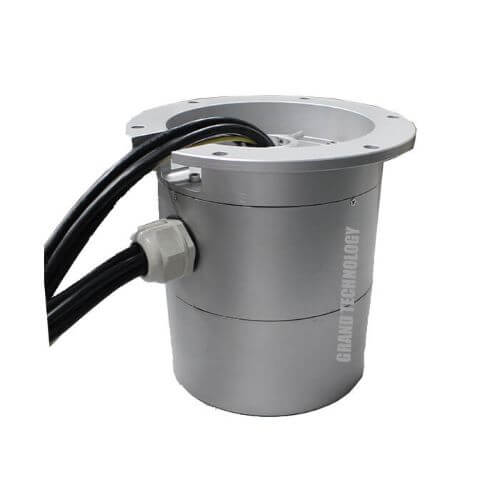
Electric motor contacts play a pivotal role in a wide array of applications. From the electric windows in cars to the elevators in skyscrapers, these components ensure that electric motors perform as intended, safely and efficiently. However, their role goes beyond simply making electrical connections. In applications where precise speed control and torque are necessary, such as in conveyor belts in manufacturing plants or in electric vehicles, electric motor contacts work in concert with sophisticated electronics to deliver seamless performance. This integration of electric motor contacts with control systems highlights their critical role in the modern world, powering the engines of industry, transportation, and convenience in our everyday lives.
In exploring the world of electric motor contacts, we will delve into real-world examples that highlight their critical role in both everyday and extraordinary applications. From the simple to the complex, these examples will bring to light the unseen but vital work that electric motor contacts perform. As we proceed, we’ll address common questions that arise about these components, debunk widespread misconceptions, and offer actionable advice for those dealing with electric motor contacts, whether they’re designing, installing, maintaining, or simply curious about how electric motors are powered. Join us on this journey into the electric heart of the machines all around us.
The Basics of Electric Motor Contacts
Electric motor contacts are at the heart of motor operation, acting as the critical link between the power source and the motor itself. They function by making or breaking the electrical circuit that powers the motor. When the contacts close, electricity flows, and the motor turns; when they open, the flow of electricity is interrupted, and the motor stops. This straightforward but crucial mechanism allows for the controlled use of electric motors in countless applications, from precision medical devices to heavy industrial machinery.
What is Electric Motor Contacts
At its core, the function of electric motor contacts is to control the electrical current’s pathway to the motor. These components decide when to allow electricity to flow to the motor and when to cut it off, enabling the start, stop, and regulation of motor speed. This control must be precise, reliable, and capable of withstanding the particular demands of each application, from the low voltages in battery-powered handheld devices to the high currents in industrial motors.
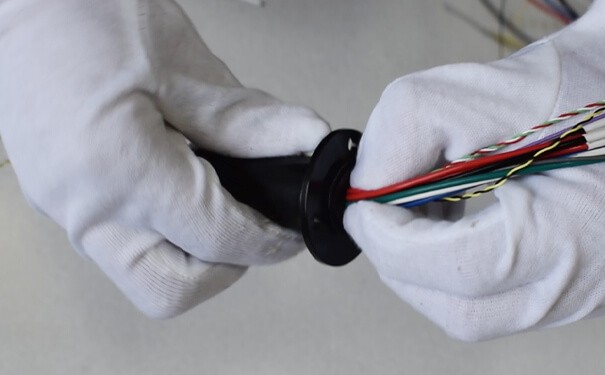
Types of Electric Motor Contacts
Electric motor contacts come in various forms, each designed to fit specific applications and functionalities. Some of the most common include:
Brushes
Brushes are one of the oldest types of electric motor contacts, primarily used in direct current (DC) motors. They are made from conductive materials, like graphite, and rest against the motor’s commutator, sliding over its segments to maintain an electrical connection as the motor spins. This action allows for the regulation of current and, consequently, the motor’s speed and torque.
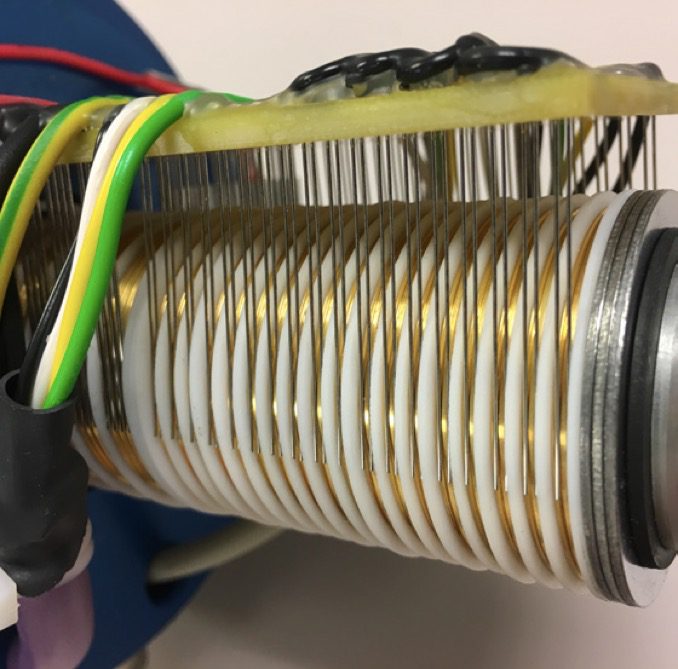
Relays
Relays are electrically operated switches that use a small current to control a much larger one. They work by utilizing an electromagnet to open or close contacts within the motor circuit. Relays are particularly useful for applications requiring switching between circuits without direct physical interaction, offering safety and convenience benefits.
Contactors
Contactors are specialized relays designed to handle higher currents, typically used in industrial applications. They can control electrical power to larger electric motors and are known for their robustness, capable of frequent switching on and off without degradation.
Real-World Examples and Application
Consider the example of an electric car. The car’s motor relies on sophisticated electronic controls to manage acceleration and braking efficiently. Brushed or brushless DC motors are common, with their contacts and electronic controllers working in tandem to regulate power flow, ensuring smooth operation under varying driving conditions.
Another example can be found in the manufacturing industry, where contactors play a vital role. These powerful electric motor contacts manage the high currents needed to operate large machinery, from conveyor belts to press machines, ensuring that these key pieces of equipment run reliably and safely, day in and day out.
What is the fundamental role and types of electric motor contacts illuminates the intricacy behind the simple action of turning a device on or off. From the humble brush to the sophisticated relay, these components are pivotal in harnessing electrical power for practical use. As we move forward, keep the examples of the electric car and industrial machinery in mind—they exemplify the unseen but essential work electric motor contacts perform in our modern world.
Materials and Design of Electric Motor Contacts
The effectiveness and durability of electric motor contacts are determined greatly by the choice of materials, design, and manufacturing precision. As the bridge between the power source and the electric motor, contacts must possess high conductivity and be able to withstand substantial heat, friction, and wear.
Materials used for Electric Motor Contacts
Several materials have proven effective for making electric motor contacts. The selection largely depends on the required electrical and thermal conductivities, mechanical strength, and cost. The following materials are commonly used:
Copper
Copper is widely used because of its excellent electrical conductivity. While pure copper can be quite soft, which might limit its durability under certain conditions, it can be alloyed with other metals like beryllium or nickel for increased strength and wear-resistance.
Silver
Silver offers even better electrical conductivity than copper and is often used to coat copper contacts to enhance their performance and resistance to corrosion.
Graphite
Graphite is used extensively in motor brushes for its good electrical conductivity, self-lubricating properties, and ability to function at high temperatures.
Tungsten and Molybdenum
Tungsten and molybdenum are used for their high melting points, strength, and electrical conductivity. They are often found in contacts that must perform under extreme conditions, such as arc flash relays in high voltage systems.
Design Considerations for Electric Motor Contacts
Motor contacts’ design is as critical as the materials used. This is because the design dictates how effectively contacts can carry current, withstand heat, and resist wear.
Size and Shape
The size and shape of contacts directly impact their ability to handle current and dissipate heat. Larger surface areas can conduct more electricity and cool more efficiently.
Contact Pressure
The pressure between contacts can affect electrical conductivity and wear. Optimal pressure ensures good connection while minimizing wear.
Arrangement and Configuration
The way contacts are arranged and how they interact with the rest of the electric motor system can impact their efficiency and durability. For instance, some designs minimize sparking when contacts open and close, which reduces wear and extends the lifespan.
Real-World Examples and Application
For industry-scale operations such as in an industrial cutting machine, contacts are often made of a silver-copper alloy, chosen for its optimal balance of conductivity, heat resistance, and durability. This combination ensures that the machine can operate consistently at high performance levels.
In household applications like blenders, motor contacts are generally made of graphite or a graphite-copper mix, providing heat resistance and good electrical conductivity. The intended lifespan and frequency of operation are also factors when selecting materials for these types of appliances.
What is the role materials and design play in the performance and durability of electric motor contacts illuminates the critical nature of these decisions. Engineers must consider the balance between conductivity, thermal characteristics, mechanical strength, and cost when designing and selecting motor contacts. Through these fine-tuned decisions, the unseen but crucial work of electric motor contacts in our daily applications and industrial processes continues reliably and efficiently.
Installation Considerations for Electric Motor Contacts
Installing electric motor contacts requires an astute understanding of how these components function within the broader motor system. Effective setup is crucial in ensuring optimal performance and prolonged lifespan of an electric motor, reducing the risk of malfunction or failure.
Guidance on Installing Electric Motor Contacts
Safety First
Always ensure your safety first. Working with electricity always carries inherent risks, so always disconnect the power before starting any work on electric motors.
Understanding the System
Firstly, it is critical to understand the specific motor system you’re working with. The type, size, voltage, and application of the electric motor will influence which contacts are appropriate and how they should be installed.
Manufacturer’s Instructions
Follow the manufacturer’s instructions diligently. These guides are specifically designed to lead you through the correct installation process for the unique specifications of a particular contact or motor.
Accurate Placement
Careful and accurate placement of contacts within the motor system is vital. Incorrect positioning can lead to ineffective operation or damage to the components.
Securing Contacts
Ensure contacts are securely fastened in their designated places, using the recommended hardware to prevent them from shifting during operation.
Troubleshooting Common Installation Challenges
Mismatched Components
Usage of incompatible or mismatched components can be a significant challenge during installation. Ensure that the contacts are suited for the specified motor and the application where it is used.
Improper Contact Pressure
In cases where contact pressure is incorrect, motor operation might be inconsistent, resulting in variable performance or excessive wear. Regular inspection and adjustment can help detect and correct this issue.
Thermal Overload
Overheating can occur if contacts are not able to dissipate heat effectively, a scenario which may lead to premature failure. This problem might require reconsideration of the contact material or design or improving the system’s heat management.
Real-World Examples and Application
In an industrial setting, such as a manufacturing plant, sometimes a large machine may repeatedly stop working. The problem could be faulty or improperly installed contacts within the motor. By understanding common troubleshooting challenges like improper contact pressure or thermal overload, the plant’s technicians can identify and address the issue, getting the machine back up and running.
Installation is a pivotal phase in the life of electric motor contacts. Proper installation, alignment, and pressure are necessary to ensure these crucial components function optimally. Besides, understanding and effectively navigating common challenges can make all the difference in maintaining the reliable operation of the electric motors that power our world.
Maintaining Your Electric Motor Contacts
Maintaining your electric motor contacts is not merely a practice but an indispensable discipline to ensure the longevity, reliability, and efficiency of your electric motors. Regular maintenance not only helps avoid unexpected breakdowns but also contributes to the energy efficiency and performance of the motor. Let’s explore how to keep these integral parts in top working condition.
Routine Maintenance for Longevity and Reliability
Regular Inspection
A cornerstone of effective maintenance is the routine visual inspection of electric motor contacts. This includes checking for any signs of wear, corrosion, or accumulation of dust and debris, which can impair the contacts’ performance.
Cleaning
Cleanliness ensures the contacts perform optimally. Use appropriate cleaning agents and methods recommended by the manufacturer to remove any contaminants that could impede conductivity.
Lubrication
While not all types of contacts require lubrication, for those that do, it’s crucial. Select the right lubricant that won’t degrade the materials of the contacts or the motor itself. Remember, the goal is to reduce friction, not to attract dust and dirt.
Secure Connections
Over time, the mechanical vibrations of operating motors can loosen connections. Regular maintenance should always include a check and tightening of contact connections as needed.
Recognizing Signs of Wear
Recognizing when contacts are wearing out and require replacement is fundamental to maintaining the efficiency and safety of electric motors.
Excessive Sparking
While some sparking is normal, excessive sparking may indicate worn contacts. This can lead to inefficiencies and potentially hazardous operating conditions.
Increased Resistance
Worn contacts may develop higher electrical resistance, which can manifest as an overheated motor or decreased performance. This often means it’s time to replace the contacts.
Visible Damage
Look for visible signs of damage such as pitting, corrosion, or melting. Such physical damage impairs the contacts’ ability to function correctly and is a clear sign that replacement is necessary.
Real-World Examples and Application
Consider a commercial bakery, which relies heavily on industrial mixers. The constant and prolonged use of these mixers demands that their electric motor contacts are in optimal condition. Routine maintenance, in this case, would involve scheduled inspections and cleanings, following the manufacturer’s guidelines. Failure to maintain these contacts could lead to mixer failures, halting production and resulting in significant losses.
Another example is the electric motors used in HVAC systems within large office buildings. These systems are critical to the comfort and safety of the building’s occupants. Facilities managers must ensure that maintenance plans include regular checks on the electric motor contacts to avoid system failures, especially during peak seasons.
Effectively maintaining electric motor contacts is not just about preventing breakdowns; it’s about ensuring the reliability and efficiency of the electric motors that play a crucial role in our industries and daily lives. Through regular maintenance and understanding when to replace worn parts, we can guarantee that these systems continue to function at their best, contributing to the smooth running of operations and the comfort of our environments.
Common Issues and Solutions with Electric Motor Contacts
Understanding common issues associated with electric motor contacts is an integral part of ensuring your motor is operating efficiently. Equally vital is knowing how to address these issues promptly and take the correct preventive measures. This chapter will establish familiarity with frequent problems users might face with their motor contacts and provide practical solutions.
Frequent Problems with Motor Contacts
Corrosion
Corrosion is a common problem that can result from high humidity, exposure to certain chemicals, or poor material selection. It can degrade the contact surfaces and lead to higher electrical resistance, affecting performance.
Wear and Tear
General wear and tear can result from prolonged use, frequent start-stop cycles, or high load applications. This can manifest as pitting, erosion, or deformation of the contact surfaces.
Overheating
Overheating often occurs when contacts can’t effectively dissipate the heat generated during operation. It can cause contacts to deform or melt, resulting in failed connections.
Contact Sticking
Sticking is when contacts fail to open or close as they should, typically due to debris accumulation, magnetic issues, or mechanical problems in the contactor itself.
Practical Solutions and Preventive Measures
Effective Material Selection
Choosing the right material for your motor contacts can help mitigate many of the above problems. For instance, copper-silver alloys can reduce the risk of corrosion while providing superior electrical conductivity.
Regular Maintenance and Inspection
Performing routine maintenance and inspections can identify and rectify issues before they become severe. They may include cleaning, lubrication, checking for loose connections, and assessing signs of wear.
Proper Usage
Understanding the correct operation of your electric motor and its limitations can help avoid issues. Avoid running motors under unsuitable loads or frequencies and adhere to recommended operational procedures.
Contact Upgrades
Sometimes the solution is to upgrade to higher-performing contacts. For instance, moving from copper to silver-coated contacts can improve resistance to wear and corrosion, enhancing performance and durability.
Real-World Examples and Application
Imagine a logistics company whose operations heavily depend on a conveyor system powered by electric motors. An unexpected failure in one motor can slow down or halt operations, causing significant disruption and loss. By understanding common issues—such as corrosion or overheating—and implementing preventive measures such as regular maintenance and inspections, the company can ensure that operations flow smoothly, minimizing the risk of unexpected downtime.
As reliable as electric motors generally are, like all machinery, they can be susceptible to problems, predominantly if not properly cared for. However, understanding the intricacies of motor contacts, knowing how to address common issues, and implementing effective maintenance routines can ensure the longevity and effectiveness of these critical components. Therefore, attention to these unseen yet crucial parts allows us to safeguard the seamless operation of the broader systems they power.
Innovations and Future Trends in Electric Motor Contacts
Like virtually every field in today’s fast-paced world, the area of electric motor contacts is not stagnant. It presents continuous technological growth spurred by the tireless pursuit of increased efficiency, durability, and usability. This chapter will explore recent advancements as well as speculate on possible future developments and their implications for users.
Recent Technological Advancements
New Materials
There have been significant advancements in the materials used for fabricating contacts. For instance, nanocrystalline metals, which offer improved endurance to wear and corrosion compared to traditional materials, are finding increasing adoption.
Smart Systems
With the advent of the Internet of Things (IoT), we’re now seeing smart motor contact systems that can provide real-time feedback about their functioning and alert to potential faults. These systems offer enormous potential for improving motor reliability and reducing downtime.
Environmentally Friendly Designs
There’s increasing focus on developing contacts that are less harmful to the environment. For instance, contacts producing less waste during their lifetime or those designed to be recyclable at end-of-life.
Potential Future Developments
AI-Integrated Systems
Artificial Intelligence (AI) can analyze vast amounts of data quickly and accurately, potentially predicting faults before they occur. We could see AI-integrated motor contact systems in the future, promoting predictive maintenance and reducing motor downtime.
3D-Printed Contacts
3D printing technology offers the promise of rapid, on-demand production of custom-designed parts. It’s plausible that, in the future, we could simply print a replacement contact at our location, reducing downtime and inventory requirements.
Energy-Efficient Contacts
Future contacts could be designed to minimize energy loss, bolstering motor performance and contributing to global energy sustainability efforts.
How Future Developments May Impact Users
Improved maintenance processes resulting from smart systems and AI integration could mean reduced downtime and cost savings for users. Simultaneously, advancements in materials and design may lead to more durable contacts, reducing the frequency of replacement. Lastly, on-site production through 3D printing and energy-efficient contacts could contribute to operational efficiency and sustainability initiatives.
Real-World Examples and Application
The impact of technology on motor contacts can already be seen, for instance, in factories with automated assembly lines. The use of smart systems allows for real-time monitoring and early fault detection, minimizing the risk of production halts and optimizing overall efficiency.
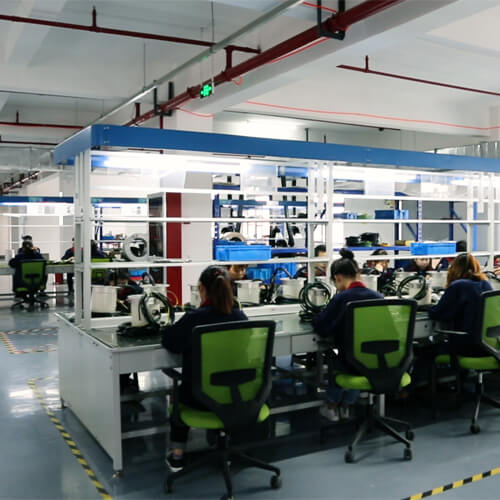
The future could see this taken to another level—for example, a smart assembly line coupled with AI could predict and schedule maintenance of motor contacts during non-peak production hours, minimizing the impact on output.
As we continue to harness technology to drive advancements in electric motor contacts, users stand to gain not just in terms of improved functionality and reduced maintenance, but also in playing a part toward a more energy-efficient, sustainable future. Every leap here enables more significant strides in larger systems, making automation, mechanization, and innovation that much more efficient, reliable, and earth-friendly.
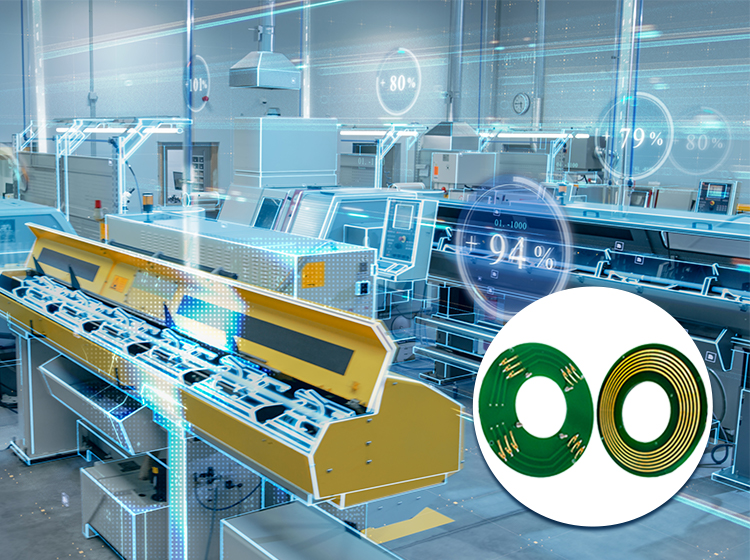
Electric Motor Contacts and Efficiency: Maximizing Performance
The efficiency of an electric motor is fundamental to its performance and longevity, and the motor contacts play a pivotal role in this. When contacts become compromised, they can significantly impact the motor’s efficiency and lead to higher operational costs. Understanding and maintaining these contacts can lead to marked improvements in motor performance. This chapter will discuss the influence of contacts on motor efficiency and present actionable tips for optimizing performance.
Influencing Factors of Contacts on Motor Efficiency
Importance of Contact Quality
The quality of the motor contacts has a direct effect on the electrical conductivity between the contact points. High-quality contacts ensure minimal voltage drop and heat generation, leading to more efficient motor performance and reduced energy consumption.
Contact Wipe and Pressure
The ‘wipe’ (motion that occurs as contacts touch and separate) and pressure of the contacts affect the stability of the connection. Optimal wipe and pressure ensure a clean contact interface, reducing resistance and energy losses during operation.
Contact Resistance and Pitting
Over time, contacts may develop greater electrical resistance due to factors like pitting—an effect of arcing that can create tiny craters on the contact surface. This elevated resistance compels the motor to work harder, thus using more energy and generating more heat.
Tips for Maximizing Performance
Regular Maintenance and Inspection
Regular maintenance is crucial. A visual inspection can reveal signs of corrosion, erosion, or excessive wear, and hence should inform maintenance operations including cleaning or, if necessary, contact replacement.
Correct Cleaning Procedures
Selecting the correct cleaning procedures can make a difference. Using appropriate industrial contact cleaners can remove contaminants that may insulate the contact surface, increasing resistance and reducing efficiency.
Ensuring Proper Contact Alignment
Misalignment of motor contacts can lead to arcing and excessive wear. Ensuring correct alignment helps maintain optimal contact operation and efficiency.
Upgrading Contacts When Necessary
Upgrading older contacts to newer, more advanced materials or designs can enhance performance. For instance, contacts with silver or silver alloy for higher conductivity can replace pure copper contacts for better performance.
Real-World Examples and Application
Consider a regional data center which operates around the clock. Every watt of electricity saved or lost is crucial due to the sheer volume of power used over time. Efficient motor contacts in the HVAC system could mean the difference between an optimal climate control environment and excessive energy costs. Through regular maintenance and inspection, the facility can maintain peak efficiency, preventing data loss from overheating and minimizing energy waste.
Another example involves public transportation systems, such as metro trains equipped with electric motors. Efficient motor contacts can contribute to punctuality and reliability of service, as well as energy savings. Regular maintenance in such scenarios not just ensures continued service but also public satisfaction and reduced environmental impact.
Ultimately, the condition of the electric motor contacts is a small yet significant factor in the grand scheme of motor efficiency. By understanding and implementing proper maintenance practices, staying updated with innovations in contact materials and design, and recognizing the impact of contacts on efficiency, users can enhance the performance of their electric motors, ensuring reliability and cost-effectiveness of operations. Keeping motor contacts in tip-top shape is not merely an operational requirement; it’s an investment in performance, sustainability, and the future.
Safety Practices for Handling Electric Motor Contacts
Safe equipment handling is imperative across all industrial sectors, but perhaps even more so when dealing with electric components like motor contacts. Contacts, though small, are part of a larger electrical system, and improper handling could result in dangerous situations such as electrical shocks or accidents caused by sudden motor failure. This chapter will explore key safety practices when dealing with motor contacts during handling and maintenance.
Key Safety Tips
Disconnect Power
Before starting any work involving the motor contacts, it’s crucial to disconnect power to the entire unit. Ensure all potential energy sources are turned off to prevent unintended start-ups. This is a fundamental rule in electrical safety.
Use Appropriate Tools
Always use tools that are suitable for electrical work. These should be insulated to prevent any potential electrical conduction through the tool, which could lead to electrical shock.
Wear Personal Protective Equipment (PPE)
Personal protective equipment, such as safety goggles, gloves, and protective footwear, can shield you from accidental injury during maintenance tasks.
Regular Inspection of Contacts
Regular inspection of contacts can spot early signs of wear or damage, thus avoiding potential safety risks due to suddenly failed contacts. Make this a routine practice.
Follow Manufacturer’s Instructions
Always adhere strictly to the instructions provided by the manufacturer during installation, operation, or maintenance. They are designed with safety as well as functionality in mind.
Consider Electrical Safety Training
Training in electrical safety can arm individuals with the latest safety guidelines, keeping them well-equipped to handle and maintain electrical motor contacts safely.
Real-World Examples and Application
Let’s consider an example of an electric motor used in factory machinery. A sudden failure due to a fault with the contacts could result in an unexpected start or stop of the machine, posing a risk not just to the operator, but to everyone in the facility. Following all necessary safety practices—such as disconnecting power before maintenance or inspections—can help to prevent such accidents, keeping the working environment safe and controlled.
In the case of an electric vehicle repair workshop, contacts in the electric motor of the vehicle could cause a significant shock if not handled properly. Use of PPE and appropriate insulated tools, coupled with comprehensive training, would help safeguard workers.
Safety is paramount when working with any electrical equipment, including motor contacts. The relatively minor nature of these components may give a false sense of security, but remember that even some of the smallest parts can pose significant risks. Applying the mentioned safety practices consistently, coupled with the right mindset toward safety, can ensure accidents are minimized or entirely avoided, making the handling of electric motor contacts a routine yet safe task.
Regulatory and Compliance Standards for Electric Motor Contacts
Adherence to industry standards and compliance requirements is of utmost importance in working with electric motor contacts. These regulations are designed and instituted with safety and longevity of components in mind, thus ensuring reliable and secure operation of the entire motor system. This chapter will outline the relevant industry standards and highlight the importance of compliance for both safety and performance.
Understanding Regulatory Standards and Compliance Requirements
International Electrotechnical Commission (IEC)
The IEC provides international standards for all electrical, electronic and related technologies, including electric motor contacts. Their guidelines cover numerous aspects including material usage, design engineering, and safety practices.
Institute of Electrical and Electronics Engineers (IEEE)
IEEE has developed numerous standards for the manufacturing, installation, and maintenance of electrical and electronic components, ensuring uniformity in specifications, performance metrics, and safety considerations, including those applicable to motor contacts.
Underwriters Laboratories (UL)
UL provides safety-related certification, validation, testing, and inspection of products. For electric motor contacts, UL listings can provide assurance of safety and quality according to recognized industry standards.
The Importance of Standard Adherence
Safety
Compliance with industry standards ensures that electric motor contacts are safe for use in varied environments, from small appliances to large machinery. These standards guide the design, manufacture and testing processes to prevent electrical and thermal mishaps.
Efficiency
Contacts designed and maintained according to standards are more likely to deliver optimal performance, as standards set effective criteria for materials, design, and maintenance of contacts.
Customer Assurance
Adhering to recognized standards instills confidence and trust in customers, giving them peace of mind that the components (and the larger systems they form a part of) have been rigorously tested and evaluated for safety and performance.
Real-World Examples and Application
Consider a manufacturing company producing industrial machinery using electric motors. Ensuring that the contacts within those motors meet IEC, IEEE, or UL standards not only guarantees the safety of their product but also contributes to its market acceptance and reputation.
Similarly, in the rapidly growing electric vehicle market, manufacturers seek components, including motor contacts, that meet or exceed established standards. This ensures safety and boosts consumer confidence, both significant factors in this competitive industry.
Industry standards and compliance requirements are integral in any field involving electrical components. With the complexity of electrical systems such as motor contacts, adherence to these regulations transforms a potential minefield of hazards into a well-ordered landscape. Ensuring standards-compliant operation and maintenance of motor contacts enhances safety, improves efficiency, and fortifies customer confidence. Thus, a commitment to regulatory compliance is more than a legal necessity—it’s an investment in the reliability and sustainability of our electrical future.
Choosing the Right Electric Motor Contacts for Your Needs
Selecting the correct electric motor contacts for specific applications or industries is crucial for ensuring performance, efficiency, and longevity of your motors. With a variety of contacts available, each suited to different operational requirements and environmental conditions, making the right choice can seem daunting. This buyer’s guide aims to simplify that process, outlining key factors to consider and providing insights for various applications.
Understanding Your Requirements
Assessing the Environment
Evaluate the operating environment of the motor. High humidity, extreme temperatures, and the presence of corrosive substances can influence the choice of contact material and design.
Determining Load Conditions
Consider the load conditions the motor will operate under. Frequent starts and stops, variable loads, and the potential for overloads should influence the type and durability of contacts chosen.
Considering Contact Material
The material of the contacts affects their conductivity, durability, and resistance to wear and corrosion. Common materials include copper, silver, and alloys thereof, each offering distinct benefits.
Buyer’s Guide for Selecting Motor Contacts
For High-Temperature Environments
Choose contacts made from materials known for their resistance to oxidation and thermal degradation. Silver or silver alloy contacts are recommended for their excellent conductivity and heat resistance.
For Corrosive Environments
In settings where corrosive substances are present, contacts with a protective coating or made from corrosion-resistant materials will ensure longevity and reliability.
For Heavy-Duty Applications
For industrial applications involving heavy loads or frequent start/stop cycles, opt for contacts designed for high durability and low wear to withstand the demanding conditions.
For Precision Applications
In industries where precision is key, such as in robotics or aerospace, choose contacts with low resistance variance and high reliability to ensure precise control.
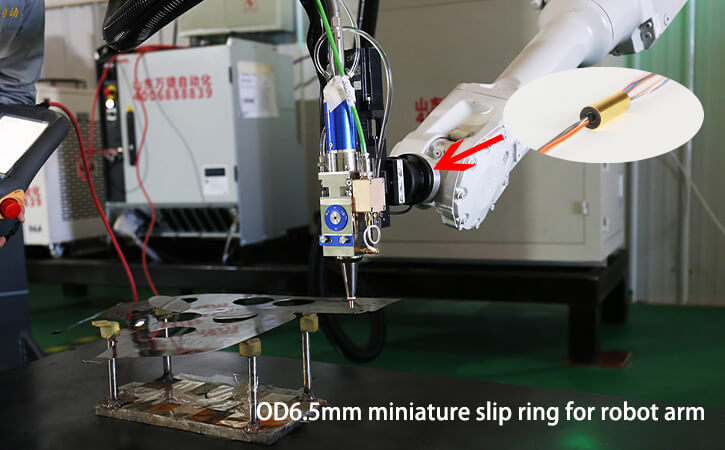
Real-World Examples and Application
Consider an electric motor used in a mining operation, where it’s exposed to dust, moisture, and varying loads. In this case, choosing rugged contacts designed to withstand harsh conditions and heavy-duty use is critical for maintaining operational efficiency and preventing downtime.
Alternatively, in a state-of-the-art manufacturing facility for electronic components, precision and reliability are paramount. Here, selecting high-quality silver alloy contacts would ensure minimal electrical resistance and consistent performance, critical for the delicate manufacturing processes.
The selection of electric motor contacts should never be an afterthought. Understanding the specific requirements of your application and environment is the first step in choosing the right contacts. From there, considering material durability, operational load, and environmental factors will guide you to the most appropriate selection. Remember, the right contacts not only improve performance but also contribute significantly to the lifespan and reliability of your electric motors. Making an informed choice will ensure that your motors meet and exceed operational expectations in any industry or application.


